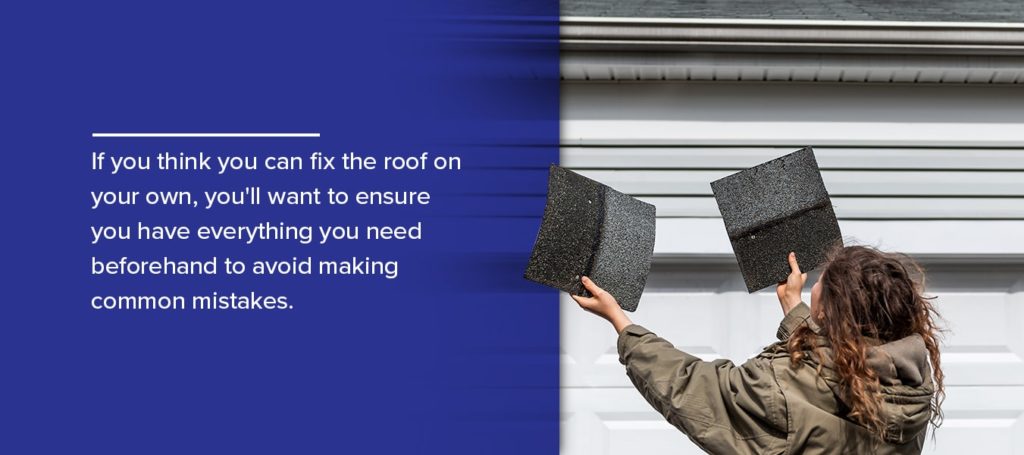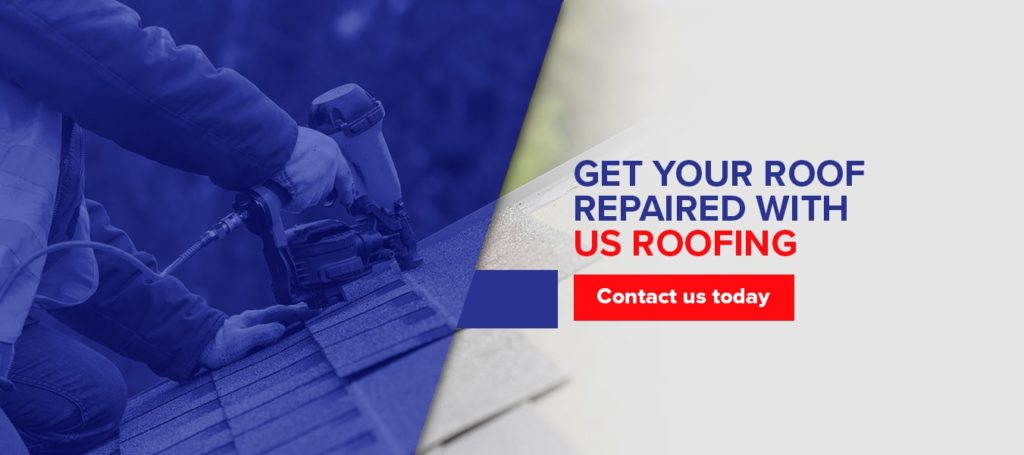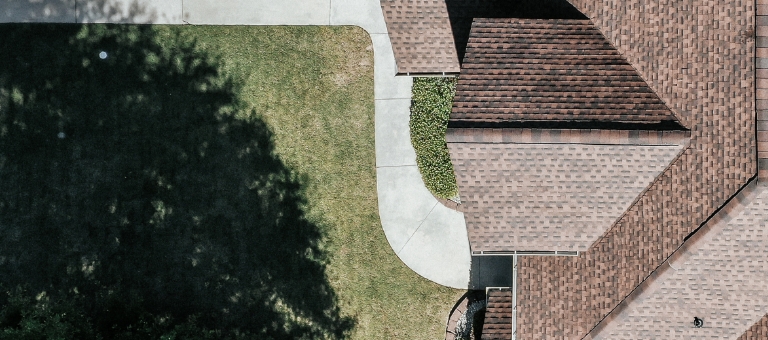Leaks can sneak into your home and wreak havoc on your interior. Don’t leave a roof leak unfixed — find the source and fix it up before it leads to severe water damage inside. If you suspect you have a leaky roof, check out this guide to learn the signs of a roof leak, when to call a professional and more.
Signs of a Roof Leak
If you’ve recently dealt with a severe storm, winds or other weather conditions that can damage a roof, you might have a roof leak. While roof leaks can start small, they can quickly lead to expensive water damage. Regularly inspecting your home and roof will help you catch leaks and problems early before they start causing serious problems. During your roof inspection, look for these signs of a leaky roof:- Water spots on your roof or ceiling
- Cracking or chipped paint
- Sagging or drooping roof
- Damp or moist spots
- Cracked, chipped, broken or missing shingles
- Damaged flashing
- Wet roof decking
- Musty smell, mold or rot
How to Find a Roof Leak
Once you’ve noticed the signs of a roof leak, you need to locate the source. You can’t set up a temporary fix until you know exactly where the leak is coming from. To find a roof leak, you’ll have to think like water. Water gets into your house through weaknesses in your roof. Any missing or damaged shingles, worked-through nails or corroded flashing can create a water entry. Once inside, water will travel along sheathing, ceilings and rafters until it finds a spot to drip down and flow toward the ground. To find water, look up. Start where you can see signs of water in your house and follow it up to the attic. Go to your attic during the daytime with a bright flashlight and look for the source of the leak. Try to spot signs of water like:- Stains or discoloration
- Moisture
- Frosted nails
- Drips
- Mold
DIY vs. Professional Fixes
Now that you have identified the source of the leaks, it’s time to address it. Whether fixing the leak yourself or calling a professional, you need to set up temporary measures to help keep the water out. This could be a bucket under the leak or a trap on top of the hole, but you need something to handle the water until you can find a more permanent solution. Roofs are tricky to deal with — they’re dangerous to work on and often require expert repair and replacement to ensure everything stays as watertight as possible. There are a few leaky roof situations that you can DIY, but you should do your research and always contact a professional if you think it’s out of your comfort level. You can potentially DIY your roof leak if the fix involves minor issues like small shingles holes, shiner nails, clogged gutters and loose or missing screws. You should call a professional roofer for more severe and complicated issues like flashing, roof sagging, shingle replacement and large holes.
Fixing a Leaky Roof on Your Own
If you think you can fix the roof on your own, you’ll want to ensure you have everything you need beforehand to avoid making common mistakes. Thoroughly evaluate the roof and ensure you’re dealing with the actual cause of the leak. Remember, everything has to be sealed perfectly to prevent more water damage to your home. You should also consider getting a professional roof inspection. The inspector will identify all the problems and provide you with the next steps. A professional can help uncover hidden, severe damage you might’ve missed, saving you money and time. You can use roof cement or metal sheets and caulk to fix small nail holes in your roof. Use roof cement to fill in holes smaller than 3/8 inch. Holes bigger than this can expand and contract, letting water inside eventually. You can use a small metal sheet for larger or multiple holes. To cover multiple holes:- Cut out a small metal sheet that will cover all the holes.
- Lift the surrounding shingles and cover the area with lots of roofing cement.
- Lay the metal on the roofing cement and over the holes.
- Caulk the sides of the metal sheet and firmly press the shingles on top.
When to Call the Professionals
While there are some minor fixes you can perform yourself, you should call a professional roofer most of the time. Roofing is complex, dangerous work that requires lots of training and experience to perfect. It’s always safer to hire a trained roofer to look at your home — they can spot damage you might have missed and will be sure to fix the problem completely. You’ll also want a professional in case your insurance company requires it. Lots of companies want work to be completed or supervised by a professional to legitimize your insurance claim. Also, professionals often have higher quality materials and warranties, ensuring you’ll get the best repair and help even after your roof work is complete. In general, if you don’t feel comfortable doing the work, call a roofer. You should also contact a roofing professional if your roof is showing the following signs:- Sagging or drooping
- Large holes
- Severe water damage
- Missing shingles




